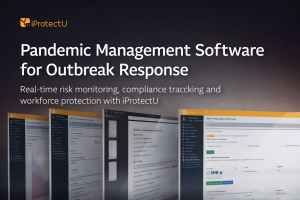Health and Safety Software » Health and Safety Software News » Health and Safety » Fire Compartmentalisation in the Workplace
Fire Compartmentalisation in the Workplace

Fire compartmentalisation is particularly important in workplace buildings, where there are often large numbers of people present. It can also help to protect valuable equipment and inventory from damage.
Reasons why fire compartmentalisation is important in workplace buildings
- To protect people: Fire compartmentalisation can give people more time to evacuate safely from a burning building. This is especially important in large buildings with complex floor plans, where it can be difficult to find the way out.
- To protect property: Fire compartmentalisation can help to prevent the spread of fire to other parts of the building, and to protect valuable equipment and inventory from damage. This can help to reduce the financial impact of a fire on the business.
- To comply with regulations: In most countries, there are regulations in place that require workplace buildings to be compartmentalised to a certain standard.
How fire compartmentalisation is achieved
Fire compartmentalisation is achieved using fire-resistant materials and construction methods. Fire-resistant walls and floors are typically made from concrete, masonry, or steel. Fire doors are made from specially designed materials that can withstand high temperatures for a prolonged period.
In addition to fire-resistant materials, it is important to seal any gaps or openings in fire compartment boundaries. This can be done using a variety of methods, such as fire-resistant mastics, sealants, and collars.
Common fire compartmentation elements
- Fire walls: Fire walls are vertical walls that extend from the foundation to the roof of a building. They are designed to prevent the spread of fire from one part of the building to another.
- Fire doors: Fire doors are specially designed doors that can withstand high temperatures for a prolonged period. They are typically used to close off openings in fire walls.
- Fire dampers: Fire dampers are devices that automatically close off ductwork and other openings in the event of a fire. This helps to prevent the spread of fire and smoke.
- Cavity barriers: Cavity barriers are materials that are used to block the spread of fire and smoke through concealed spaces, such as wall cavities and roof cavities.
Maintaining fire compartmentation
It is important to maintain fire compartmentation to ensure its effectiveness. This includes regularly inspecting fire doors, fire dampers, and cavity barriers to make sure that they are in good condition and operating properly.
It is imperative to keep fire compartment boundaries free from obstructions. This means that doors and other openings should not be propped open, and that furniture and other items should not be placed in front of fire walls or fire doors.
The iProtectU health and safety software provides:
- An inspection and Audit App which allows for safety inspection of the workplace and associated report
- eLearning on a wide range of EHS topics which include fire safety
- Scheduling functionality for managers to send eLearning, risk assessments and documents out to all staff via the software with tracks completion and compliance
- Fire risk assessment templates
- Management system to document control the policy on fire safety
- Method Statement module for the creation of working instructions
- Legal register that provides legislation guidance on fire safety
- Incident investigation module that tracks incidents involving fire hazards both with an app and via desktop
- Hazard observation app where staff can report and record any concerns regarding fire safety management to the organisation
- Asset management App ensuring assets are recorded in the software
Arrange your demonstration
Let us show you how we can transform your health and safety, risk and compliance management
Please choose a date and time for your demo. We look forward to meeting with you.
Latest Updates & Information

A Very iProtectU New Year’s Tale – From Compliance to Continuous Confidence in 2026!
As we step into 2026, it’s time to embrace a smarter approach to safety. Discover

Twas the Night Before Compliance: A Very iProtectU Christmas & New Year’s Tale
Ho ho hold on – before you climb that ladder to hang the fairy lights…

How Pandemic Management Software Helps Organisations Respond to Europe’s Escalating Flu Outbreak
Europe’s rising influenza activity underscores the importance of having the right digital tools in place.

Supporting Local Sustainability: Restoring Native Oysters to the Solent
iProtectU is proud to support the Final Straw Foundation’s Native Oyster Restoration Project, helping restore

iProtectU Featured on IBEC: The Real Truth About Choosing Health & Safety Software”
When a national voice like IBEC publishes your perspective, it matters.
This week, iProtectU

Why Modern HSE Software is Essential – How iProtectU is Shaping the Future of Safety
Modern HSE software has evolved into a strategic necessity, empowering organisations to manage risk proactively,







